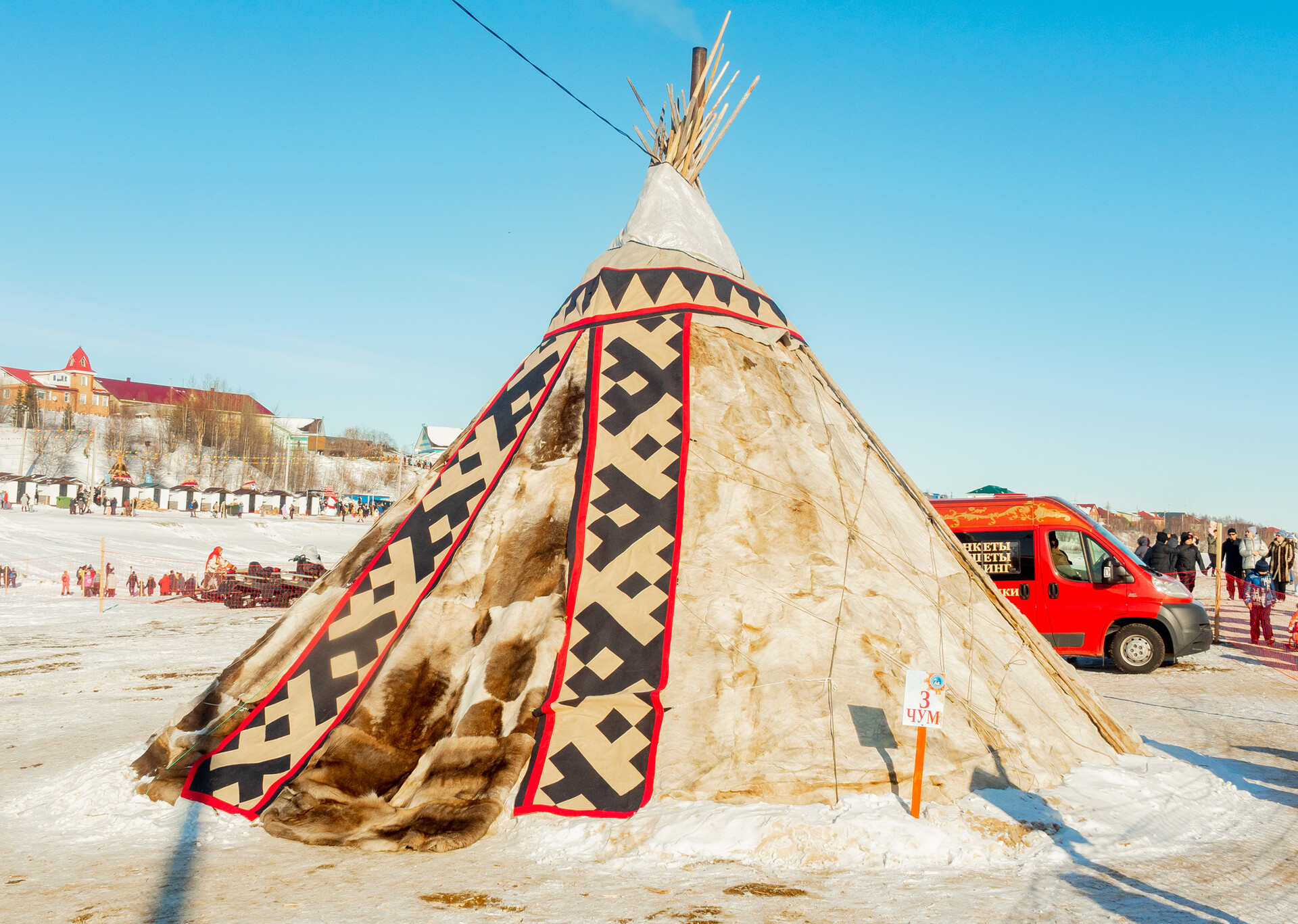Could you live in a reindeer herder’s ‘chum’? (PHOTOS)

In addition to its urban and rural residents, Russia’s Far North, also has inhabitants who lead a nomadic lifestyle. These are mostly reindeer herders. Reindeer are constantly migrating in search of the most tasty food and their breeders have to move with them.

The largest number of Russian nomads - about 10,000 people - live on the Yamal Peninsula in Siberia. They are the indigenous peoples of the North: the Nenets, the Khanty and the Selkup. Once a year, they come with their ‘chums’ to the city of Salekhard to celebrate ‘Reindeer Herder Day’. It is then that urban dwellers get to explore their dwellings in every detail.
Small outside, big inside

The ‘chum’ is the traditional dwelling of the peoples of the North. Its conical shape is suited to the harsh Arctic conditions. This shape makes it stable in snowstorms, as snow easily slides off its roof, while the ‘chum’ is quickly heated on the inside and the way it is constructed makes it very quick to assemble and dismantle.
This is what the process of assembling a Nenets ‘chum’ is like:
In Nenets families in the past, the ‘chum’ was assembled and put up by the women but, nowadays, this tradition is long gone. The whole family takes part in erecting their dwelling.
“It usually takes us an hour in the summer to erect and assemble our ‘chum’ - and three hours in the winter, if there is a lot of snow,” says Maryam, a young woman from the Yamal settlement of Aksarka. The ‘chum’ which she has opened up to visitors has about 40 poles and 80 reindeer hides. “Eight people can live comfortably in it,” she says, adding that families used to be larger in the past, with 10 children, while, nowadays, they have five or six at the most - hence there is more than enough space in the ‘chum’. And, with curtains, you can screen off a separate “room” (‘polog’) for yourself.

An average ‘chum’ is around 5-8 meters in diameter at its base. The floor is laid with wooden boards covered with reindeer hides. The central area is occupied by the hearth - a metal stove which both heats the interior and serves as a cooker. As a rule, there is a table to one side around which family and guests gather.

“A ‘chum’ is made of entirely natural materials,” Maryam says. “We make our own poles. We are in the forest-tundra, so there’s no problem finding trees. The reindeer are also ours and we gradually store up their hides. But, if you were to put it in monetary terms, the cost of a ‘chum’ of this kind is in the region of 1.2 million rubles (approx. $15,000, which is comparable to what one would pay for a one-room apartment in a small Russian town).”
“When the children grow up and want to set up their own family, they build themselves a new ‘chum’. Young people get married at around 25 these days and their parents usually help them with their ‘chum’,” says Anna from another settlement. In addition, there is an allowance available in Yamal known as the ‘multi-child chum capital’: On the birth of a third child, you qualify a ‘chum’ assembly kit. It includes a stove, poles, floorboards, reindeer skins, tent cloth and a sled.

The indigenous peoples of the North also observe particular rituals to do with their dwellings. "A woman shouldn’t go behind the stove, the hearth, which we regard as a sacred place,” says Galina from the Minley nomad camp near Salekhard. “Likewise, you mustn’t go round a ‘chum’ if something needs adjusting - first you have to go one way and then the other.”
Living out of suitcases
“We are nomads and there are some grazing grounds where we stay for a week, others where we settle for a month or two and others still where we stop for just a day. In the winter, we stay in the same place for four months, from January to April,” says Nikolai from the Priuralsky District.

The local word for this migration is ‘kastlanie’. None of the routes have changed for centuries: Today’s teams follow the tracks left by their ancestors, traces of which remain in the tundra. And the reindeer herders can work out in advance when they are going to find themselves close to settlements where they will be able to replenish their stocks of food and other essentials.

These days, they have snowmobiles, motor vehicles, laptops and mobile phones, as well as portable transmitters and petrol generators. But, the northerners say that the most important thing is their sense of freedom.
“When you find yourself in a town, you depend on the time. But we don’t have to get up according to the clock and dash off to catch the bus. We won’t keep the boss waiting. You live as your fate dictates,” says Galina.

In addition to their ‘chums’, the families of reindeer herders on Yamal today have their own houses or perfectly ordinary apartments. For instance, one member of the family might work in the settlement and another might move here to retire, while other relatives continue to migrate with the reindeer, but they all visit one another. And they all recall the forest and the tundra with great fondness.
“You probably don’t understand what it’s really like - to understand, you have to live there a bit. Shall we go roaming with the reindeer?” Anna suggests.


